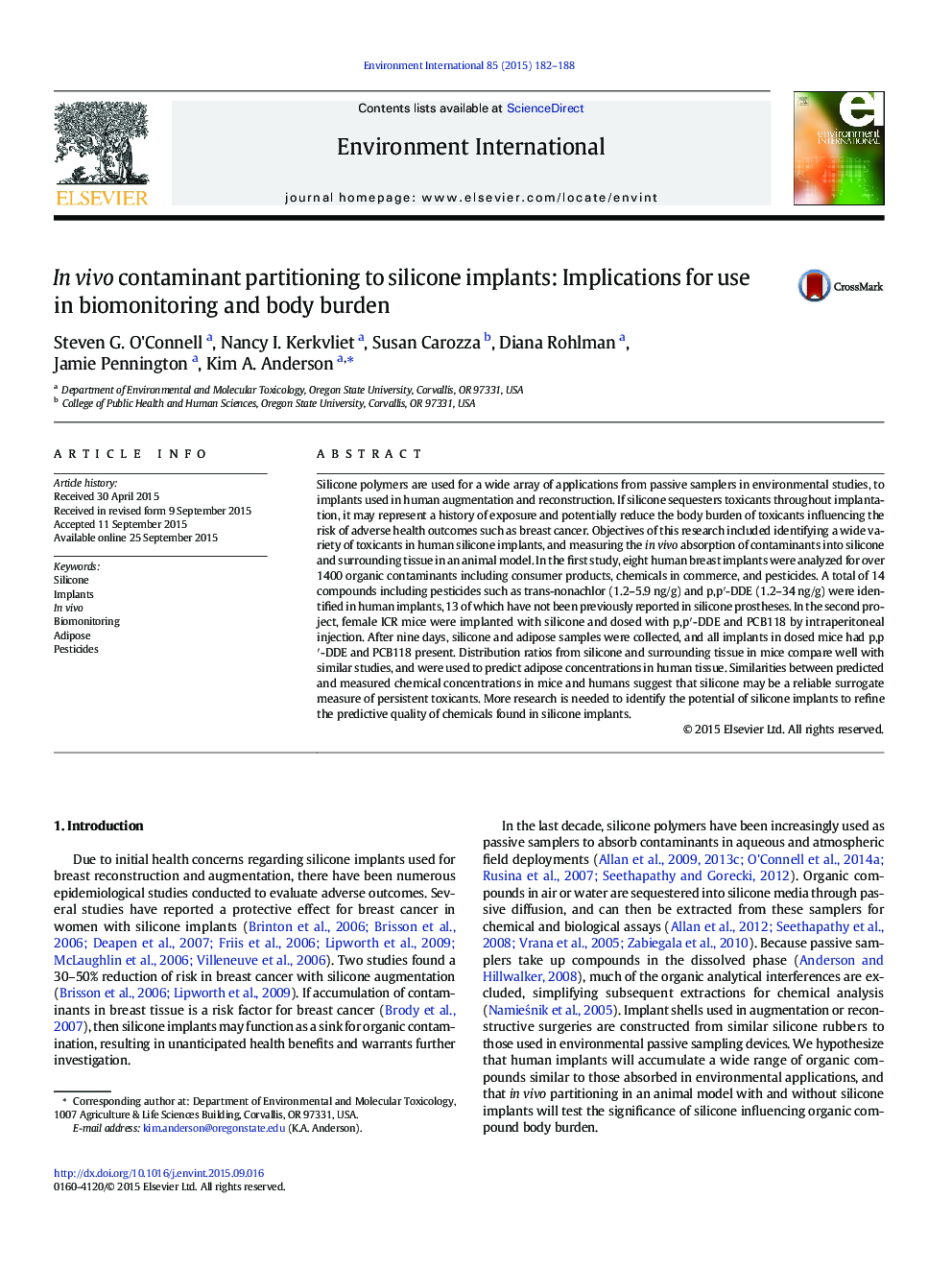| کد مقاله | کد نشریه | سال انتشار | مقاله انگلیسی | نسخه تمام متن |
|---|---|---|---|---|
| 6313582 | 1619043 | 2015 | 7 صفحه PDF | دانلود رایگان |

- Human implants screened for over 1400 chemicals.
- Silicone and tissue chemical concentrations compared in vivo using ICR mice.
- 14 chemicals identified in human implants representing several chemical classes.
- All implants in dosed mice had p,p-DDE and PCB118 present above detection limits.
- Predicted adipose values using implant data within range of measured concentrations
Silicone polymers are used for a wide array of applications from passive samplers in environmental studies, to implants used in human augmentation and reconstruction. If silicone sequesters toxicants throughout implantation, it may represent a history of exposure and potentially reduce the body burden of toxicants influencing the risk of adverse health outcomes such as breast cancer. Objectives of this research included identifying a wide variety of toxicants in human silicone implants, and measuring the in vivo absorption of contaminants into silicone and surrounding tissue in an animal model. In the first study, eight human breast implants were analyzed for over 1400 organic contaminants including consumer products, chemicals in commerce, and pesticides. A total of 14 compounds including pesticides such as trans-nonachlor (1.2-5.9Â ng/g) and p,pâ²-DDE (1.2-34Â ng/g) were identified in human implants, 13 of which have not been previously reported in silicone prostheses. In the second project, female ICR mice were implanted with silicone and dosed with p,pâ²-DDE and PCB118 by intraperitoneal injection. After nine days, silicone and adipose samples were collected, and all implants in dosed mice had p,pâ²-DDE and PCB118 present. Distribution ratios from silicone and surrounding tissue in mice compare well with similar studies, and were used to predict adipose concentrations in human tissue. Similarities between predicted and measured chemical concentrations in mice and humans suggest that silicone may be a reliable surrogate measure of persistent toxicants. More research is needed to identify the potential of silicone implants to refine the predictive quality of chemicals found in silicone implants.
Journal: Environment International - Volume 85, December 2015, Pages 182-188